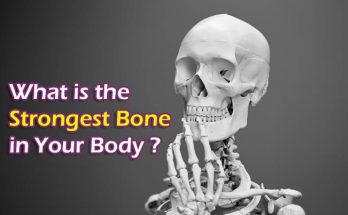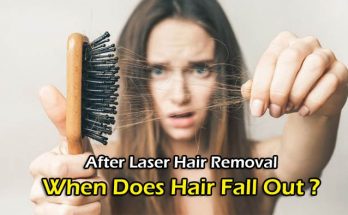Laser Treatment for Hair Loss Side Effects: Each and every single day, the majority of people lose about 100 hairs from their scalp. While Nearly All people develop those hairs grow back, some folks do not because of
Table of Contents
Laser Treatment for Hair Loss Side Effects
A nonsurgical option which is a laser

Low-level laser light therapy (LLLT) has was has been FDA approved since 2007 for actually for the safety of it so they’ve been found to be safe for patients. There are there multiple entities of low-level laser light therapy. It initially started, and I think we’ve all seen those commercials of the hair comb, where you actually hold a comb over your hair and what it does is it’s a laser emitting device.
Now, we have in-home devices which are essentially baseball caps that you wear typically about 30 minutes a day, and those, in the same manner, helps to stimulate the follicles.

The laser just penetrates into the scalp deep enough to affect the hair follicle. And what that allows is for the thickening of miniaturizing hair, 30 minutes a day about three days a week, or at least every other day. And again, hair loss benefits are not seen for at least six months or even up to a year after.
What kind of results do you see who patients who choose this lllt?
Very good. I mean it’s something that and results are an important term, because a good result in hair loss is number one, the slowing down of the shedding, and number two is a thickening of existing hairs. So, those are good results.
Oftentimes, it’s a little tricky, because a patient, for instance, a good result may be that they see themselves. A year and a year later, where they were a year before so they haven’t noticed a progression of hair loss. To me, that’s a good result because you haven’t noticed any hair loss. Over the course of the year.
So that means that whatever you’re doing is slowing down the progression of the hair loss because you would have otherwise had been worse off right. A year later.
The Side Effects of Laser Therapy
Since low-light treatment is a non-invasive therapy, the probability of side effects is generally infrequent. At the presence of unwanted effects, they are generally modest and largely temporary.
While these side effects are rare, you need to discuss with your physician to figure the dangers of any unwanted results post-treatment. Should you experience these side effects following therapy, consult a physician promptly.
- Headaches
- Burning sensation
- Scalp Infection
- Itching
Experts urge individuals who experience hair loss to undergo laser hair treatment. It is painless, and the probability of side effects is reduced, which means you should not need to be concerned about any unwanted outcomes.
Just like everything, there are drawbacks to the treatment too. For instance, it is time-consuming; odds are you’re undergoing a few sessions to attain potential outcomes. In addition, it may be costly, depending upon your budget and the practice’s offers.
Main Causes of Hair Loss
- Age
- heredity
- hormonal changes
- medical ailments, such as lupus and diabetes
- poor nourishment
- side effects of medical therapy, for example, chemotherapy
- stress
Treatments to Prevent hair loss and possibly reverse it include:
- Medicines such as minoxidil (Rogaine) and finasteride (Propecia)
- hair transplant surgery
- laser treatment
Does laser therapy for baldness work?

What it will
Low-level laser therapy — also referred to as red light treatment and cold laser therapy — irradiates photons into scalp tissues. These photons are absorbed by feeble cells to promote hair growth. It’s widely accepted that the procedure is safe, tolerable, and less invasive than hair transplant operation.
The concept
The theory of laser therapy for hair loss is the low-dose laser remedies invigorate flow and stimulation that encourages hair follicles to grow hair follicles.
The results
Because the outcomes of laser treatment are inconsistent, the finish of the medical community seems to be that it seems to work for some people, but not for others.
More study is needed, but some studies have yielded encouraging results:
- As per a 2014 study trusted Source, non-invasive laser treatment seemed to be safe and effective for hair growth in both women and men.
- A 2013 study trusted Source of 41 males ages 18 to 48 found that laser hair therapy provided a 39% increase in hair growth over a period of 16 weeks.
So you are never likely to have a really thick, lush head of hair again. However, you’d love to hang on to everything you have got. Short of a transplant, is there anything you can do to prevent thinning hair?
Yes. With a few remedies, you are able to slow down or prevent baldness — and perhaps even develop back some hair that you thought was gone forever. Keep reading to find out what works and what does not.
Minoxidil | Laser Treatment for Hair Loss Side Effects

This is the sole over-the-counter medicine for baldness accepted by the FDA to be used by both women and men. It will not save a receding hairline. It will stimulate hair growth, but scientists are not very certain how it functions.
Minoxidil can be obtained as Rogaine or even Theroxidil, or in generic type. It is marketed as a liquid or polyurethane and in 2 strengths: 2% and 5%.
- Effectiveness: Minoxidil works for approximately 2 out of 3 guys. It is best if you are under age 40 and have just recently begun to lose your hair.
- The best way to use it two times every day, as soon as your hair is dry, then use minoxidil in the scalp where the hair has begun to thin. Then be patient. You might not detect changes for 4 weeks or longer.
- What it does not do: Minoxidil doesn’t cure hair loss. Should you quit using it, then you are going to begin losing hair. Your hair can fall out quicker than previously.
- Side Effects: You might have redness, itching, dryness, flaking, or other scalp irritation, although this is rare. It is more likely if you use the more powerful 5 percent solution.
Finasteride | Laser Treatment for Hair Loss Side Effects

This medicine prevents the body from creating the hormone in the origin of male pattern hair loss, DHT (dihydrotestosterone). It’s available under the brand name Propecia.
- Effectiveness: Finasteride Is Quite effective. It stops or slows baldness in almost 90 percent of guys. About two-thirds of those guys also regrow some hair loss.
- The best way to use it in Finasteride is a tablet computer. Generally, you take it every day. Your dermatologist may recommend using it in conjunction with minoxidil.
- What it does not do: Like minoxidil, it does not cure baldness. If you quit taking it, then you may eliminate hair.
- Side effects: Finasteride may induce erectile dysfunction along with other sexual side effects, although this is uncommon. In case it occurs for you, it will probably clear up when you stop taking finasteride. However, for many guys, that may take 3 weeks or longer.
FAQ about Laser Treatment
-
Is laser treatment for hair loss safe?
What it will. Low-level laser Treatment — also known as red light treatment and chilly laser treatment — irradiates photons into scalp tissues. All these photons are absorbed by feeble cells to promote hair development. It is widely recognized that the process is secure, tolerable, and less invasive than hair transplant operation.
-
How much does laser therapy for hair loss cost?
The Illumiflow laser cap prices Everywhere from $599 to $949, based on the number of diodes have been from the laser cap. The price of a hair transplant varies considerably and depends upon many things. Generally, it is going to price between $4,000 and $15,000 depending on the specialization of the physician and other aspects.
-
How long does it take for hair to grow back after the first laser treatment?
The period between laser hair Removals is 6 to 8 weeks or whenever you start to find new hair development.
-
Why does it take so long for hair to fall out after laser?
The laser uses extreme heat To proceed through the skin to target the origin, which will be that the hair follicle, beneath the skin to eliminate the undesirable hair. The hair follicle will be not able to develop new hairs after permanently ruined. The ordinary hair growth speed is roughly half an inch each month.
-
Can hair grow back after thinning?
Though hair re-expansion Might be possible, you also need to understand when to seek expert assistance. If the reason behind thinning hair is genetics, then it will never grow back by itself. To grow back a wholesome, full head of hair, you are going to want to take action, which entails reviewing distinct hair reduction choices.
-
What is the best treatment for female hair loss?
Minoxidil (Rogaine) 5 percent is the only topical medicine approved by the FDA to get female-pattern baldness. The once-daily usage foam therapy regrows hair in 81 percent of those girls who attempt it. Liquid choices of 2% and 5% options are available over the counter.
-
Can laser therapy regrow hair?
Laser hair treatment works by stimulating cellular activity on your pores to Slow down and decrease hair reduction whilst encouraging baldness (via another mechanism than Minoxidil). The advantages of employing the laser apparatus include: Stimulating baldness. Slimming additional hair reduction.
-
Does hair grow back thicker after laser hair removal?
“But, There’s a requirement Called paradoxical hypertrichosis, which is an uncommon threat of laser epilation, in which the hair may grow thicker following laser.”
-
Do hair loss treatments actually work?
So, you’re wondering if baldness Products really work? Yes! FDA-approved baldness treatments are successful on many men that are managing male pattern hair loss (or, should you want to seem more scientific, androgenetic alopecia). … But it is possible to avert baldness from occurring in the first location.
-
Can I shave after the laser session?
You must shave no less than 24 hours prior to the day of your next remedy to prevent irritation on the skin. If you shave the treatment area, you also superficially exfoliating The epidermis and this might cause some sensitivity. After that your laser hair removal session you can shave the region following 48 hours if need be.





